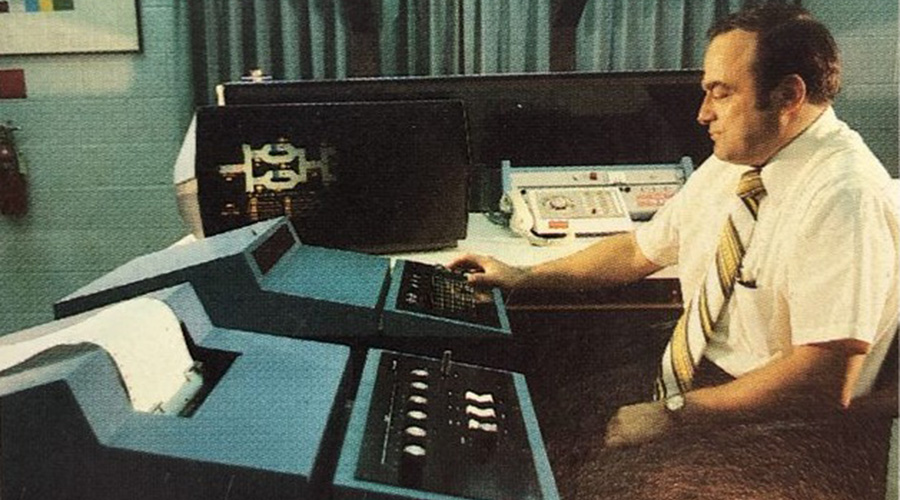Employee Motivation: Measuring Success
Managers discuss the potential pitfalls of employee motivation programs
Facility managers have implemented an employee motivation program. But has it achieved all the goals they have hoped to accomplish? What needs to change? What were the effects of the actions?
In the second part of this roundtable discussion, we further look at the effects of employee motivation programs and if they accomplish what managers hope they will. The roundtable includes the following Advisory Board members from Building Operating Management and Facility Maintenance Decisions:
- Brian Cowperthwaite, senior director, FS operations and maintenance, The University of Chicago
- Doug Diaz, director – facility optimization, Clark County School District, Henderson, Nevada
- Steve Smith, director of facilities, Clements University Hospital, UT Southwestern Medical Center, Dallas, Texas
- Keith Tate, facility management director, Polk County, Florida
FacilitiesNet: How do you measure the success or effectiveness of employee motivation programs?
Cowperthwaite: We have very detailed annual engagement surveys conducted through Gallup. By focusing on how engaged our teammates are in daily activities or responsibilities we get a better year-over-year measurement of how motivated they are to stay engaged and an interactive part of the organization. On the supervisor or manager level, I think scheduling weekly or bi-weekly one-on-one discussions with my teammates helps me gauge where they are in their professional journey. One-on-one scheduled discussions allow me to hear their opinions, recurring frustrations and their wins and successes.
Tate: Motivation is like customer satisfaction; how do you measure it? To me it is all about longevity. If your employees are motivated and happy, they will be productive and they will stick around for the long haul.
Diaz: The success of our performance is measured by several key factors, including the timely completion of work orders, the quality of workmanship, the frequency of callbacks per job, and the degree of positive feedback received from our valued customers. These metrics are integral to our business evaluation process and are closely monitored to ensure the highest level of service excellence is achieved. Our commitment to delivering exceptional service is unwavering, and we strive to maintain a standard of excellence that is unparalleled in our industry.
Smith: If employees are willing to go above and beyond for their leaders and organization, then they are motivated. If you have problems with employees filling in for a missing co-worker, or complaining about every task, maybe they just take longer to complete their daily rounds. If those conditions are seen, then the team has a morale or motivation problem. Some quantitative criteria may be work order completion times, customer survey results, employee survey results and good, old-fashioned gossip. A good leader will know if there’s a moral or motivation issue in a team.
FacilitiesNet: What kinds of risks or pitfalls can be associated with employee motivation programs?
Smith: Employees can be motivated in several different ways, each having different outcomes. Monetary programs can have some positive results, but other employees may complain if it is not implemented fairly. Simple recognition programs with no-cost certificates or similar are effective to some, but other employees may not care or be motivated. Employees of the Quarter recognition can recognize superior performance, whereas other employees may consider it a popularity contest. My personal feeling is that hiring employees who have a willingness to serve and do the right thing, without any desire for recognition makes for a great motivated employee.
Cowperthwaite: I’m not really a fan of motivation programs. I’ve been told in the past, “It’s called work because we have to pay you to get you to come here and do this every day.” Knowing we are all coming to work, rather than create a program, focus on improving the company culture. Tell and show people how they are valued and make coming to work an enjoyable experience and atmosphere.
Tate: Programs can become stale, or they don’t have full buy-in from upper management. When this happens, you will have a revolving door of employees. Employees must feel like they have value if you want them to stick around.
FacilitiesNet: What trends or developments do you foresee in employee motivation?
Diaz: The contract for our support staff personnel requires a revision which will require an increase in hourly pay and a change in their job descriptions. It is to be noted that the said contract has been duly negotiated. The changes will improve the quality of our support staff services and ensure their job satisfaction. The revised contract will positively impact the performance of our support staff, thereby leading to an overall improvement in our organizational efficiency.
Tate: When you are in an environment where you must have boots on the ground to do your job, as is the case with most facilities management organizations, the more that you can do virtually or with artificial intelligence is where I believe the industry is headed.
Smith: Two trends come to mind: Empowerment and flexibility. Employees are looking to be more involved in decisions, planning and direction. Employees want more of a seat at the decision-making table and not stuck waiting for decisions to be made from above with no input and flexibility in terms of time off and schedules. The buzzword of several years ago was work-life balance. Now it is flexibility. That has come after the pandemic with work-from-home, two-parenting households where the responsibilities are equally shared, and the ability to take a mental day off from work. Leaders need to understand the generational differences of workers just entering the workforce, and those that are retiring. The needs and wants of each group are different and leaders need to be flexible with both groups and find common ground.
Cowperthwaite: It seems the carrot or the stick has come and go as part of the lexicon. I would hope that flexibility and improved communications continue to work their way into motivating employees. We can call it a hybrid work schedule but just by focusing on quality of work and contributions over visibility and hours on-site will aid in motivating some teammates to be a part of an organization. Hopefully, once we get them on board, they come to love and contribute to the company culture and atmosphere and working together is all the motivation they need.
Dave Lubach is the executive editor of the facilities market. He has nine years of experience writing about facility management and maintenance issues.
Related Topics:













